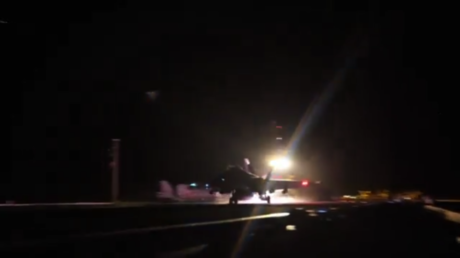Scientists see more than just genius in Vincent van Gogh’s “The Starry Night.” They see physics.
TIMOTHY A. CLARY/Getty Images
Van Gogh’s “The Starry Night” seems to follow a mathematical theory describing fluids in nature.He couldn’t have understood the equations, which came about decades after his death. Researchers found van Gogh‘s swirls fit patterns seen in clouds, water, and other natural objects.
When Vincent van Gogh painted “The Starry Night,” one of his most iconic paintings, he incorporated a mix of memory, observation, and, perhaps, his intuition for mathematics and nature.
According to a recent study published in the journal Physics of Fluids, the curling swaths of color in the painting’s night sky closely follow a mathematical theory that describes the complex flow of swirling fluids.
While van Gogh may not have fully understood the underlying mathematics of what he was painting, he still managed to capture it on the canvas, the study’s lead author, Yongxiang Huang, told Business Insider via email.
“We believe that van Gogh, as one of the foremost painters of his era, meticulously studied the movement of the sky on numerous occasions,” Huang said. “Consequently, when he created this renowned painting, the flow pattern accurately adhered to the physical laws.”
The physics of van Gogh’s brushstrokes
The swirls in van Gogh’s “The Starry Night” seem to adhere to mathematical principles that describe turbulence.
Yinxiang Ma
“The issue concerning ‘The Starry Night’ is whether its depicted flowing sky mirrors reality,” Huang said. To figure that out, Huang and his colleagues examined 14 swirls in a high-resolution image of “The Starry Night.”
Based on the swirls’ size and the distance between them, the researchers determined that they adhered incredibly closely to Kolmogorov’s turbulence theory.
In 1941 — 52 years after van Gogh painted “The Starry Night” — mathematician Andrey N. Kolmogorov proposed a formula to explain how the kinetic energy of a vigorously moving fluid flowed from larger eddies, or circular currents, to smaller ones.
“Turbulent flows are a frequent occurrence in everyday life,” Huang said. You can see turbulence in action in a flowing river, your gushing faucet, or moving clouds.
While churning water may seem chaotic, its swirls follow patterns, which mathematical equations — like Kolmogorov’s — can help explain.
Of course, van Gogh didn’t use these equations, since they didn’t exist while he was alive. But the fact that “The Starry Night” resembles turbulent activity so accurately is a testament to the painter’s keen observation of nature.
Even his brushstrokes in the masterpiece seemed to fit with a different law related to turbulence, called Batchelor scaling, which describes the way turbulence mixes fluids.
The researchers found that van Gogh’s tiny brushstroke eddies followed patterns they would expect to see from particles swirling together in a fluid.
Van Gogh captured at least one element of turbulence
Vincent van Gogh painted other masterpieces in addition to “The Starry Night.”
Fine Art/ Getty Images
Van Gogh painted “The Starry Night” in 1889 while he was recuperating in an asylum in southern France where he voluntarily checked in after mutilating his left ear.
Van Gogh sketched the views he saw from his room’s window and painted in the asylum’s garden and a makeshift studio. He completed about 150 paintings during his yearlong stay.
Not everything in “The Starry Night” looks exactly as he would have seen it. For example, there was no village outside his window.
Yet there’s one part of the painting that van Gogh wouldn’t have been able to create without turbulence: the bright object near the horizon, which is likely Venus.
Its position low on the hills and bright, white color make Barnard astronomer Janna Levin think van Gogh saw the planet in the night sky. “There’s no star, besides our sun, close enough to look like anything but a twinkle,” she told The BBC’s “The Way I See It” podcast in 2019.
“The only reason it twinkles is because of the turbulent air,” she added. “The turbulent air is usually so invisible to us except for that it makes the stars twinkle.”





+ There are no comments
Add yours